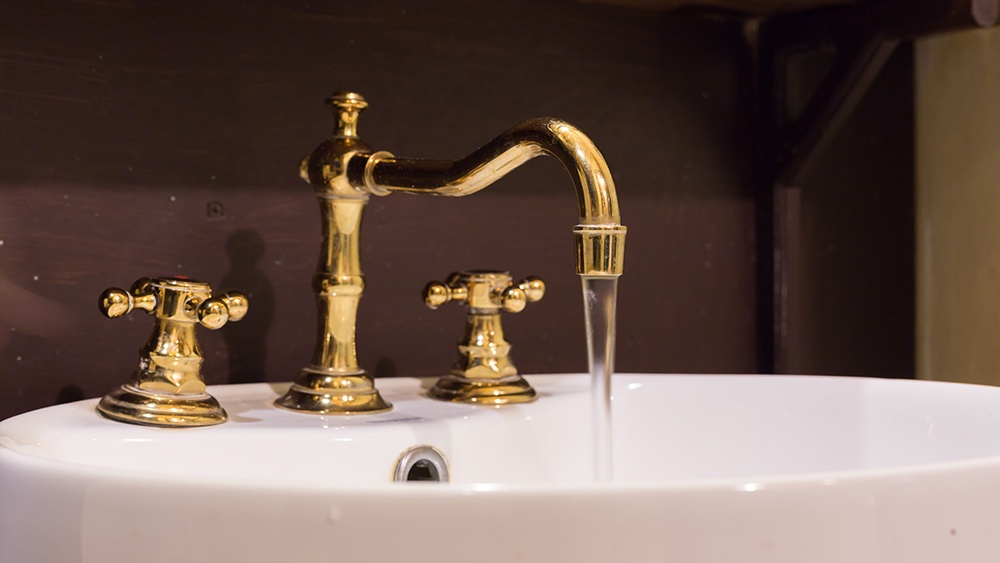
Did you know that copper plumbing is the most common material for residential plumbing today? Some things never change, as archaeologists discovered copper water pipes in the Indus River Valley in India that date back to about 4,000 B.C.
What other plumbing products shaped the industry as we know it today? Warner Service gathered short histories of the most important inventions in the plumbing industry.
Toilet
Arguably, the most impactful plumbing innovation was the toilet. Prior to today's toilets, the “toilet” was a collection of communal outhouses, chamber pots, and holes in the ground outside.
During the castle-building boom of the 11th Century, chamber pots were supplemented with a new variation of the toilet. It was integrated into the castle as its own space: the first known bathroom.
According to the Smithsonian Institution, these early bathrooms were known as “garderobers,” a euphemism for "closet." These bathrooms ran vertically down to the ground, then evolved into small rooms that protruded from castle walls as distinct bottomless bays. This proved an issue during wartime, as enemies scaled these vertical bays for invasions.
To solve this medieval plumbing problem, several new designs emerged. For example, spiral-up towers, cesspools, and moats. The Christchurch monastery developed an elaborate, modernized sewage system that separated running water, rain drainage, and waste.
The basic design of that sewage system was adapted to fit current living conditions. The toilet was no longer an architectural element. It became a central and necessary plumbing aspect to every structure.
Fun Fact: Before toilet paper first circulated in 1857, people used a variety of other methods. Clay, stones, a communal sponge on a long stick, corncobs, and newspapers were used before the toilet paper of today.
Faucet
This plumbing appliance shaped the industry, as water conservation, home life, and plumbing changed throughout society.
In 1700 BC, the Minoan Palace of Knossos in Greece used terracotta piping to provide water for faucets made of gold, silver, and marble.
From 1000 BC to 476 AD, the Romans used lead pipes in personal bathrooms. However, public faucets still used gold, silver, and marble.
In 1913, the Quaturn Cartridge was invented. It stopped and started the flow of water from a faucet, so it needed only a quarter turn instead of several full turns.
About 30 years later, inventor Al Moen worked on a single-hand faucet design after scalding himself with hot water. During this time, inventor Landis Perry designed a faucet ball valve that mixed hot and cold water with volume control.
Moen and Perry sold and patented their designs. Using Perry’s design, inventor Alex Manoogian developed a washerless ball valve faucet called the Delta Faucet. After five years, the Delta Faucet was in more than a million U.S. homes and went international.
Over the years, Manoogian’s company, Delta, developed other faucet innovations, including a two-handle washerless line, a decorative faucet with a high-arc spout, brass finish and texture, and a do-it-yourself faucet installation guide.
By 1980, Delta introduced the first domestically produced faucet with a pull-out spray head. In this decade, electronic faucets were introduced to detect motion and conserve water.
In 1996, Delta used Physical Vapor Deposition for an anti-tarnish finish to its faucets. A few years later, the plumbing company introduced a hands-free electronic faucet for home kitchens and bathrooms.
In 2005, Delta introduced the Universal Valve design, which changed a faucet appearance, style, and function without changing the pipes. A few years later, the company introduced the touch faucet.
Today, faucets mimic sheets and drops of rain. As basic inventions are innovated using nature as inspiration, this plumbing appliance only gets better.
Water Heater
In 306 AD, the Romans had large baths with heated water. While these weren’t considered real water heaters, this method was regarded as a pioneer work for water heating.
By 1868, painter Benjamin Waddy Maughan patented the first residential water heater, which used natural gases to heat the water. However, the water heater didn’t have a flue for gas vapor ventilation. This made it unsafe for homes.
A few years later, mechanical engineer Edwin Ruud took inspiration from Maughan’s water heater and included additional safety features.
“Ruud’s water heater was a gas-heated, cast iron appliance with a copper heat exchanger,” according to Water Heater Pros. “When the bather opened a water faucet, an actuator valve turned on the heater’s burners.”
In the new century, Ruud popularized the tankless water heater, originally invented in 1929.
The 1990s was considered the golden period for water heater innovations. It was when the best versions of electric, solar, and gas water heaters came into existence -- and Ruud was at the forefront.
Today, we turn on the switch of water heater to get hot water from faucets to showers, bathtubs, and sinks. While not a miracle, it's an advancement of technology. Now, water heaters are more energy efficient, smaller, and quieter.
From toilets and faucets to water heaters, the history of plumbing is fascinating. For more information about residential plumbing, subscribe to our blog:


